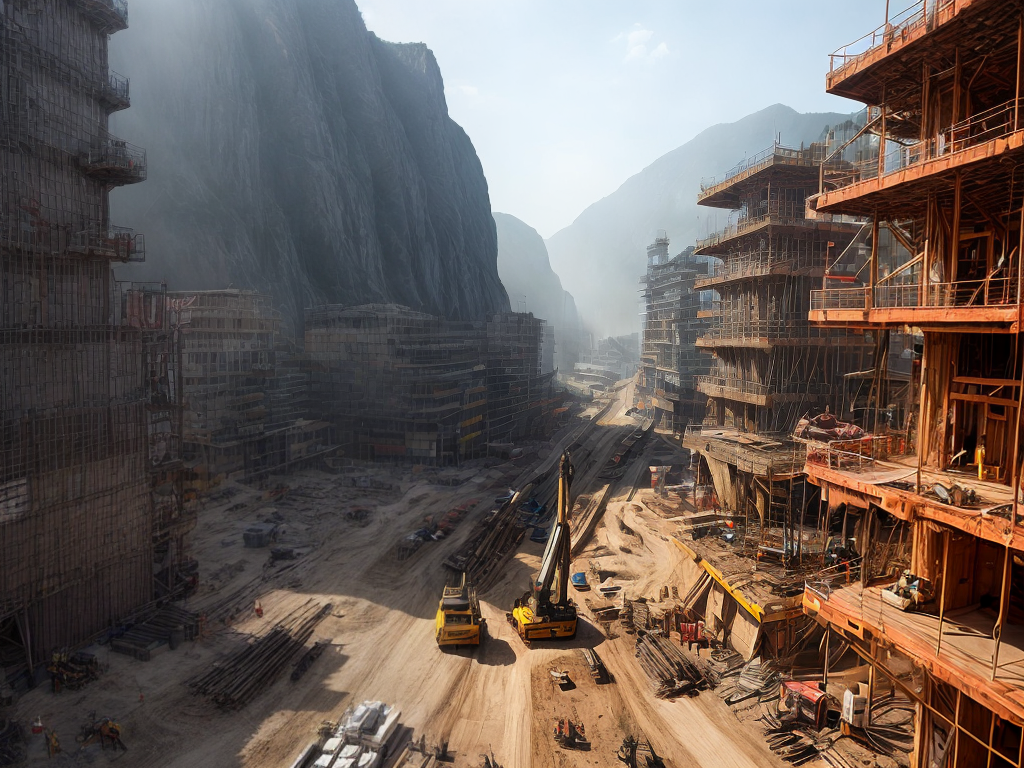
As I stand on the bustling construction site, surrounded by the towering cranes and the rhythmic thud of hammers, it is hard to ignore the stark contrast between the immense progress we have made in constructing our modern cities and the need for enhanced safety measures. Over the years, advancements in safety standards have become paramount to protect the lives of workers and mitigate potential hazards. From the increased use of personal protective equipment (PPE) to the implementation of safety training programs, there have been significant strides in ensuring the well-being of those who build our urban landscapes. But what are the latest advancements that continue to revolutionize safety practices in this ever-evolving industry?
Increased Use of Personal Protective Equipment (PPE)
I frequently wear personal protective equipment (PPE) to ensure my safety on construction sites. The effectiveness of training programs in promoting PPE compliance is crucial for maintaining a safe work environment. Proper training equips workers with the necessary knowledge and skills to utilize PPE correctly.
The training effectiveness can be measured by the level of PPE compliance observed among workers. If employees consistently wear the required PPE, it indicates that the training has been successful in instilling safety practices. However, if there is low compliance, it may indicate a need for further training or reinforcement of existing protocols.
To ensure the training is effective, it should be comprehensive and cover all aspects of PPE usage. This includes understanding the different types of PPE, their specific purposes, and how to properly inspect, wear, and maintain them. Training should also emphasize the importance of PPE compliance and the potential consequences of neglecting safety measures.
Regular evaluations and refresher courses can help reinforce training effectiveness and ensure ongoing compliance with PPE requirements. By continuously assessing and improving training programs, construction sites can enhance safety standards and protect workers from potential hazards.
Implementation of Safety Training Programs
After establishing the importance of effective PPE training, the next step is to discuss the implementation of safety training programs in construction sites. Safety training is crucial in ensuring the well-being of workers and reducing the risk of accidents and injuries. To enhance safety training effectiveness and promote employee engagement, construction sites should consider the following:
- Interactive training sessions: Incorporating hands-on activities and real-life scenarios can make the training more engaging and memorable for employees.
- Tailored training programs: Recognizing that different job roles have varying safety requirements, customized training programs should be developed to address specific needs.
- Regular refresher courses: Safety training should not be a one-time event. Regular refresher courses can help reinforce knowledge and ensure that employees stay updated with the latest safety protocols.
- Involvement of supervisors: Supervisors play a crucial role in promoting safety on construction sites. They should actively participate in safety training programs and provide ongoing support and guidance to their team members.
- Feedback and evaluation: Regular feedback sessions and evaluations can help identify areas for improvement and measure the effectiveness of safety training programs, enabling continuous enhancements.
Adoption of New Technologies for Hazard Identification
New technologies are being adopted in the construction industry to improve hazard identification methods. With the aim of enhancing safety standards on construction sites, automated monitoring systems and virtual reality simulations are being increasingly utilized. These technologies offer innovative ways to identify potential hazards and mitigate risks.
Automated monitoring systems play a crucial role in hazard identification by continuously monitoring the construction site for any abnormalities or potential dangers. These systems use sensors and cameras to detect unsafe conditions such as excessive noise levels, temperature fluctuations, or the presence of hazardous substances. By providing real-time data and alerts, these systems enable prompt action to be taken to prevent accidents and injuries.
Virtual reality simulations have also emerged as a powerful tool for hazard identification. These simulations allow construction workers to experience potential hazardous situations in a controlled and safe environment. By immersing workers in realistic scenarios, virtual reality simulations help them recognize potential hazards and practice appropriate safety measures. This training method improves hazard awareness and response, ultimately reducing the likelihood of accidents on construction sites.
The adoption of automated monitoring systems and virtual reality simulations signifies a significant step forward in the construction industry’s commitment to enhancing safety standards. By leveraging these technologies, construction companies can proactively identify and address potential hazards, ensuring a safer working environment for all.
Improved Fall Protection Measures
Improved fall protection measures have become a crucial focus in the construction industry to minimize the risk of accidents and injuries on construction sites. With the implementation of height regulations and the use of safety netting, construction workers are provided with enhanced safety measures. Here are five key aspects of improved fall protection measures:
- Height regulations: The construction industry has developed strict regulations regarding the height at which workers can operate. These regulations ensure that workers are not exposed to unnecessary risks and provide guidelines for safe working conditions.
- Safety netting: Safety netting is now widely used as a preventive measure against falls. It is installed at various levels of the construction site to catch falling objects or workers, significantly reducing the chances of severe injuries.
- Personal protective equipment (PPE): Workers are required to wear appropriate PPE, such as harnesses, helmets, and safety boots, to protect themselves from falls. Regular inspections ensure that PPE is in good condition and properly used.
- Training and awareness programs: Construction companies are investing in comprehensive training programs to educate workers about fall hazards and prevention techniques. These programs increase workers’ awareness and equip them with the knowledge and skills to work safely at heights.
- Ongoing safety inspections: Regular safety inspections are conducted on construction sites to identify potential fall hazards. By addressing these hazards promptly, construction companies can create a safer working environment for their employees.
These improved fall protection measures demonstrate the industry’s commitment to the safety and well-being of construction workers, ensuring that they can carry out their tasks without unnecessary risks.
Enhanced Communication and Emergency Response Systems
With the continued focus on enhancing safety measures in the construction industry, the implementation of enhanced communication and emergency response systems has become a critical priority. Digital connectivity and real-time monitoring are key components of these systems, enabling better coordination and faster response times in case of emergencies.
The use of digital connectivity allows for seamless communication between workers, supervisors, and emergency personnel. This can be achieved through the use of smartphones, radios, and other digital devices. Real-time monitoring ensures that potential hazards and emergencies are detected and addressed promptly. For example, sensors can be installed to detect changes in temperature, gas levels, or structural integrity, triggering immediate alerts to relevant parties.
These enhanced communication and emergency response systems offer several benefits. First, they enable quick dissemination of information, ensuring that everyone on the construction site is aware of potential dangers and emergency protocols. Second, real-time monitoring allows for proactive identification and prevention of hazards, minimizing the risk of accidents and injuries. Lastly, in case of emergencies, these systems facilitate rapid response and coordination, potentially saving lives and reducing the severity of injuries.
Stricter Enforcement of Safety Regulations
Strict enforcement of safety regulations is crucial to ensuring the well-being of workers on construction sites. By implementing stricter enforcement measures, construction companies can actively contribute to improving the overall safety culture within the industry. Here are five key ways that stricter enforcement can lead to a safer construction environment:
- Increased compliance: When safety regulations are strictly enforced, workers are more likely to adhere to them, reducing the risk of accidents and injuries.
- Accountability: Stricter enforcement holds both employers and employees accountable for following safety protocols, fostering a culture of responsibility and awareness.
- Deterrence: The fear of facing consequences for non-compliance acts as a deterrent, encouraging individuals to prioritize safety and minimize risky behavior.
- Continuous improvement: Regular monitoring and enforcement of safety regulations allow for identification of areas that need improvement, leading to ongoing safety enhancements.
- Industry reputation: Stricter enforcement demonstrates a commitment to worker safety, enhancing the reputation of construction companies and attracting skilled workers who prioritize safety.





